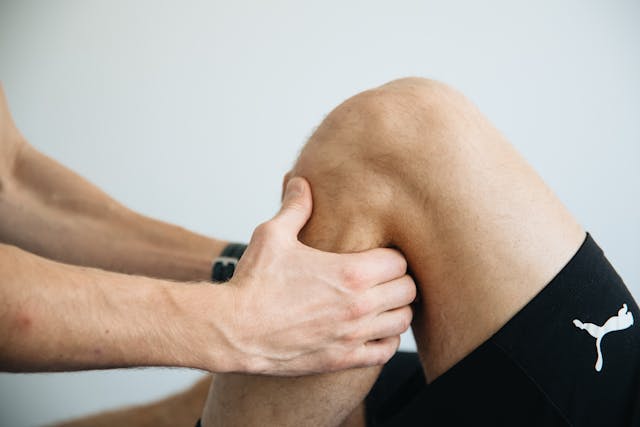
Does your knee pain when you take the stairs?
Does it ache after a walk?
You might have tried a brace or just decided to “live with it.” But you don’t have to. The reason those simple fixes often don’t work is that knee pain is rarely a simple problem. It can be caused by anything from arthritis to a muscle imbalance in your hip.
That’s why you need a plan that looks at the whole picture. A physiotherapist doesn’t just look at your knee – they figure out the root cause of your pain to fix it for good.
Before any treatment can begin, we need to understand exactly what’s going on. This is the most important step. It’s a conversation.
We’ll ask you a lot of questions. When did it start? What makes it feel better? What makes it worse? What are your goals? Do you want to get back to running, or just be able to play with your grandkids without pain?
Your story gives us the clues we need. Then comes the hands-on assessment. We need to see how you move.
We’ll test your strength. And not just in your knee. Often, knee pain is caused by weakness in your hips, glutes, or core. Your knee is just taking the extra strain.
We’ll even watch how you walk. Sometimes, small patterns in your stride can point to the real source of the problem.
Building Your Recovery Plan
Once we know the “why,” we can build a plan just for you. This plan uses a few different tools to get you moving again.
This is where your therapist uses skilled, hands-on techniques called manual therapy. This isn’t a general massage. It involves specific movements to help reduce stiffness in the joint and release tightness in the muscles around the knee that might be pulling things out of alignment. It helps calm the pain down so you can start moving better.
This is the foundation of getting better for the long term.
These are not random exercises from the internet. They are specific movements prescribed just for you, based on what we found in your assessment.
We start gently to get things moving and control pain. Then, we focus on strengthening the specific muscles that are weak – whether it’s your quads, your hamstrings, or your glutes.
Finally, we work on balance. These exercises retrain your nerves and muscles to work together, so your knee feels stable and you can trust it again.
Our job isn’t done when the pain is gone. We want to make sure you have the tools to keep it from coming back.
You’ll get a home exercise program. This is maybe the most important part of your recovery. Doing these simple exercises at home is how you lock in the progress you make in the clinic and take control of your own health.
The final goal isn’t just to be pain-free. It’s to be stronger, more mobile, and more confident than you were before the injury.
Knee pain doesn’t have to run your life.
A real solution starts with a real diagnosis. Let us help you understand the root cause of your pain.
Schedule a comprehensive assessment with the expert team at Highland Physio & Rehab and take the first step on a personalized path to recovery.